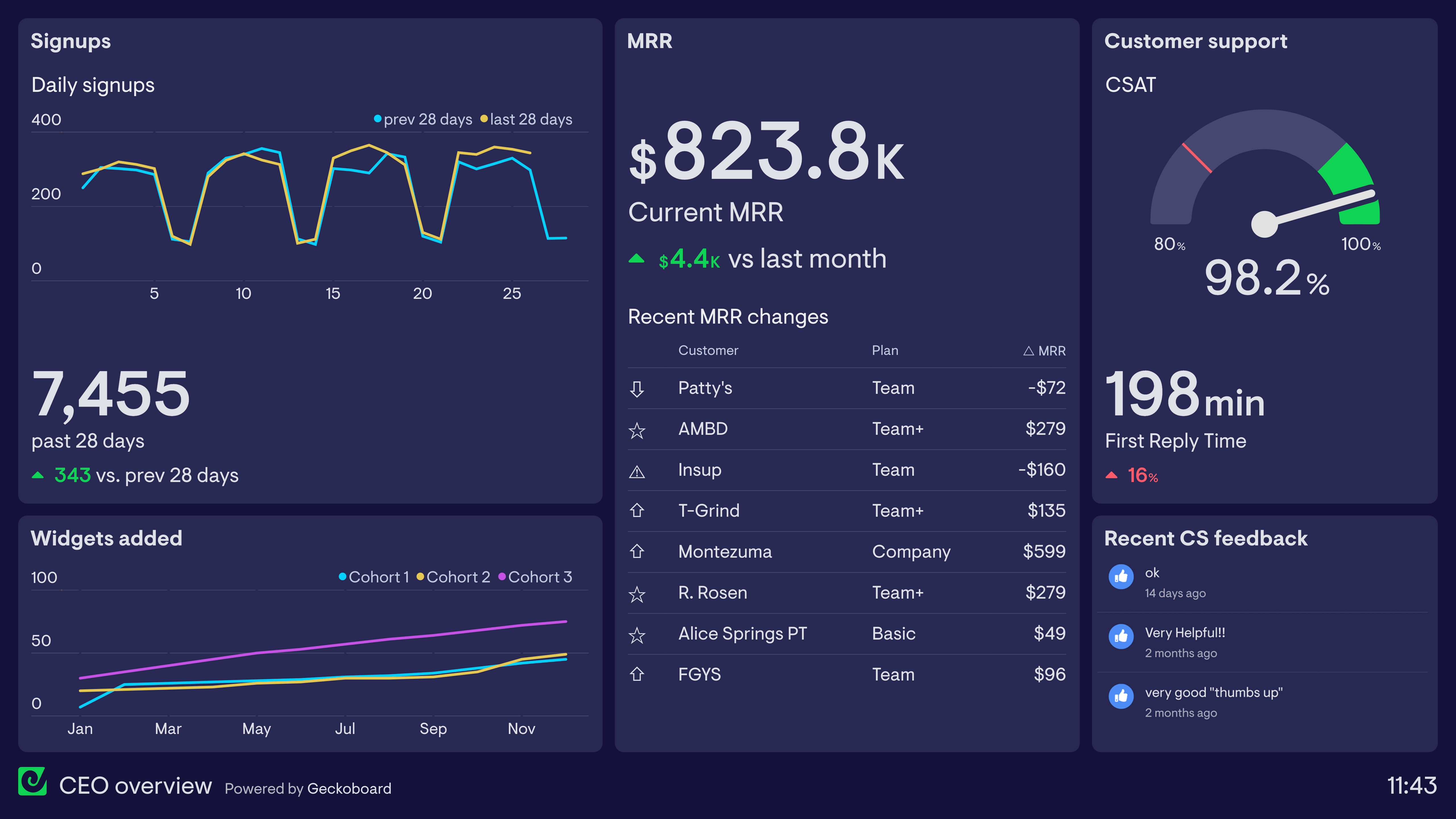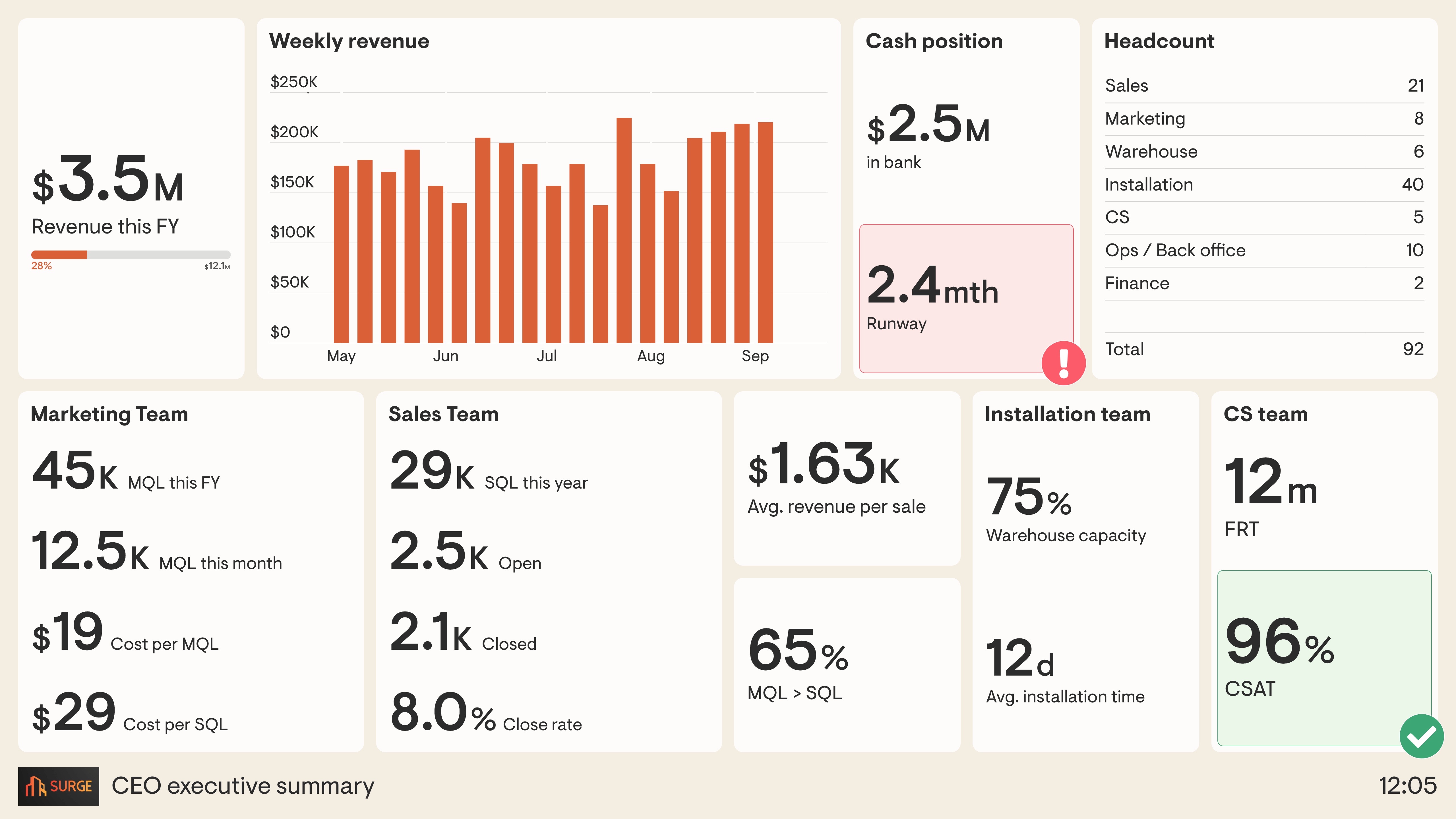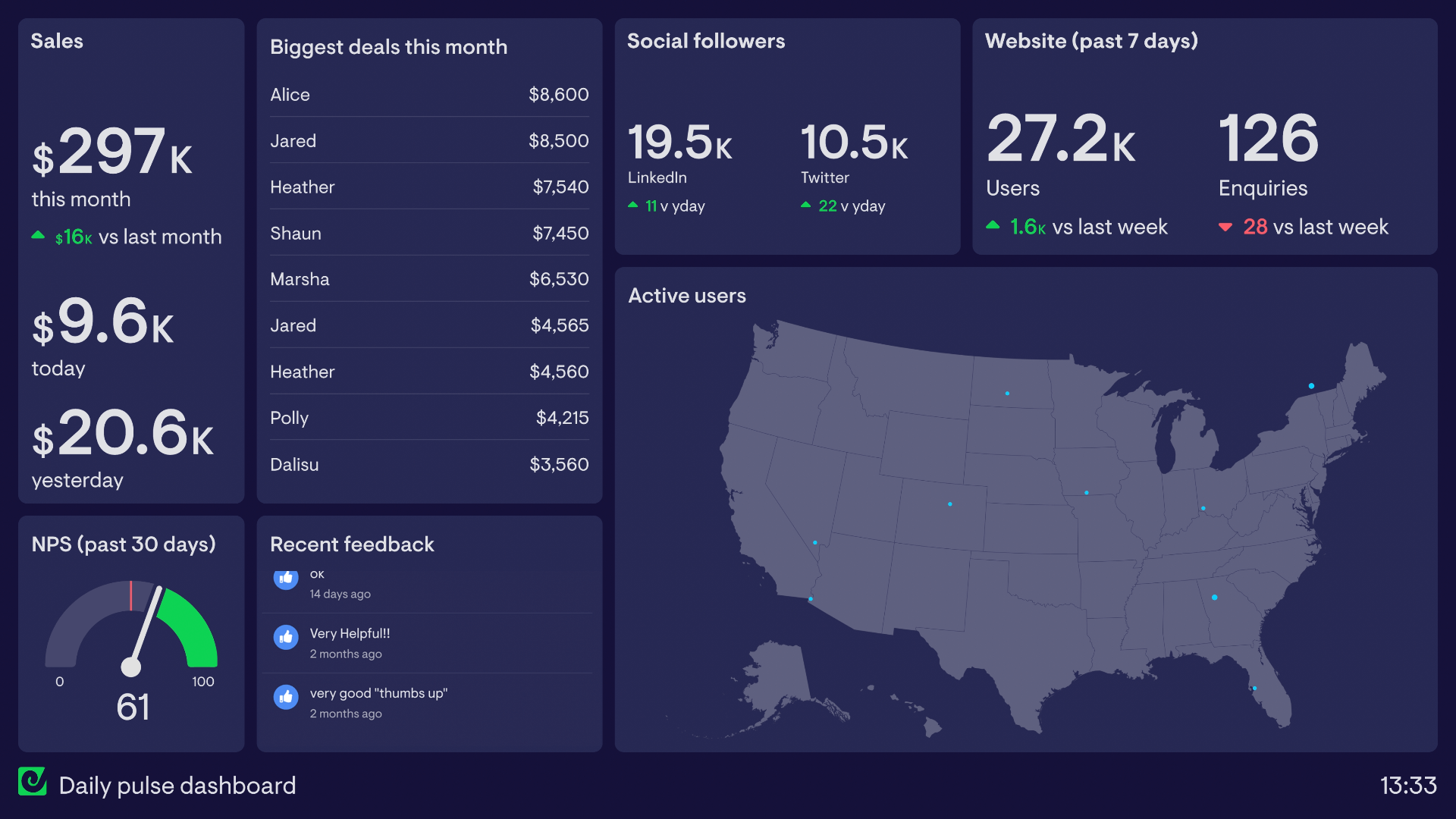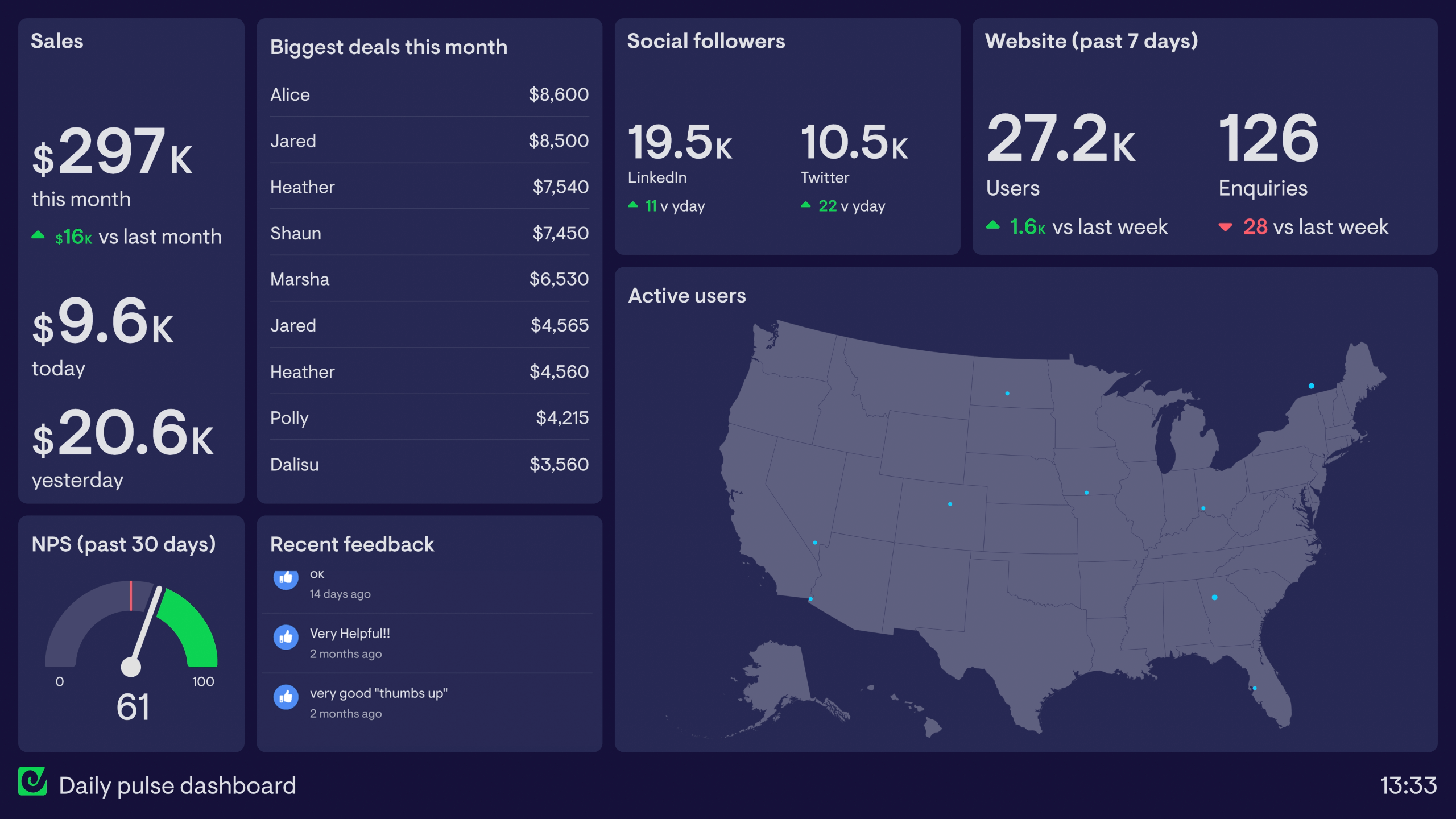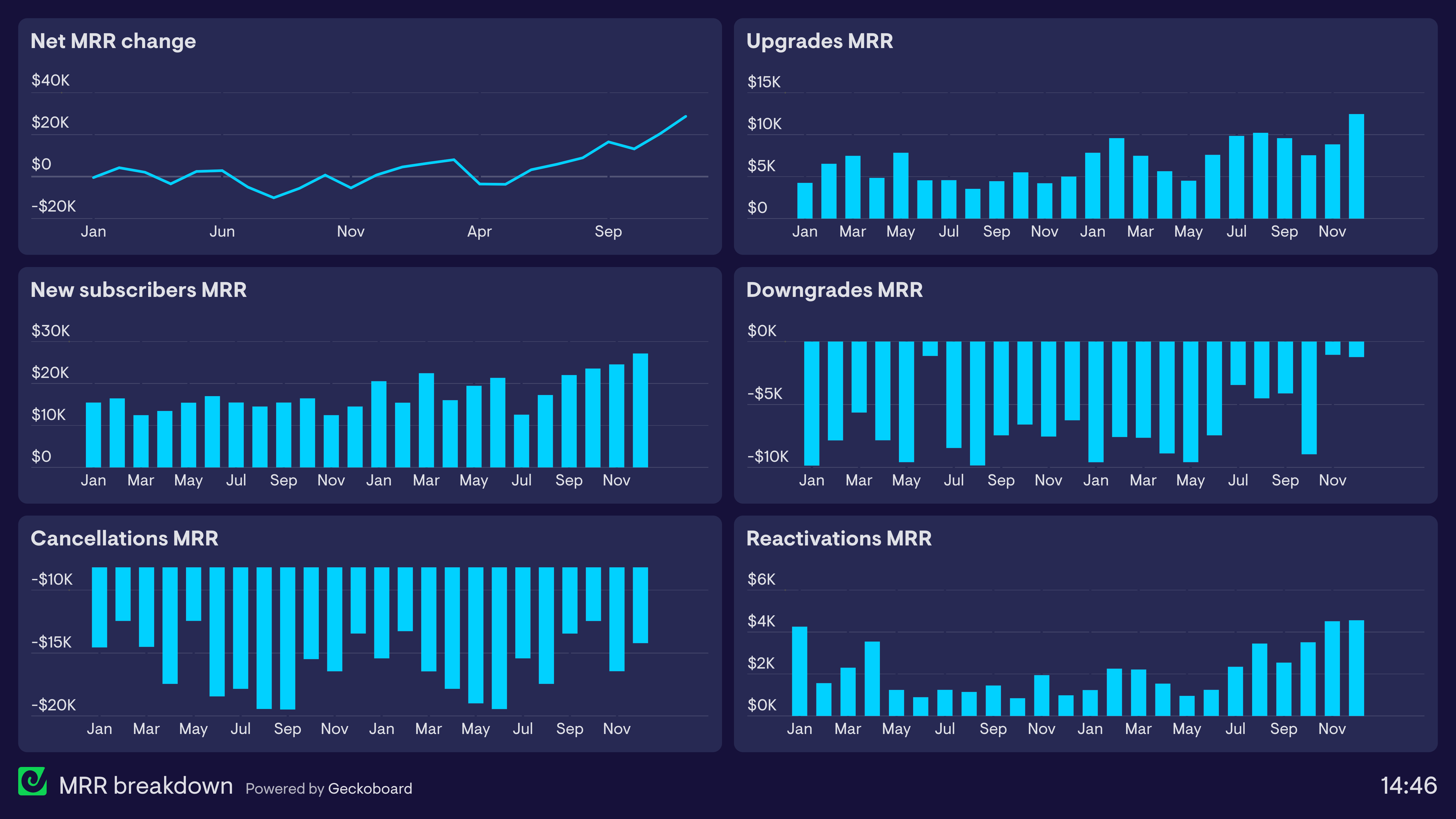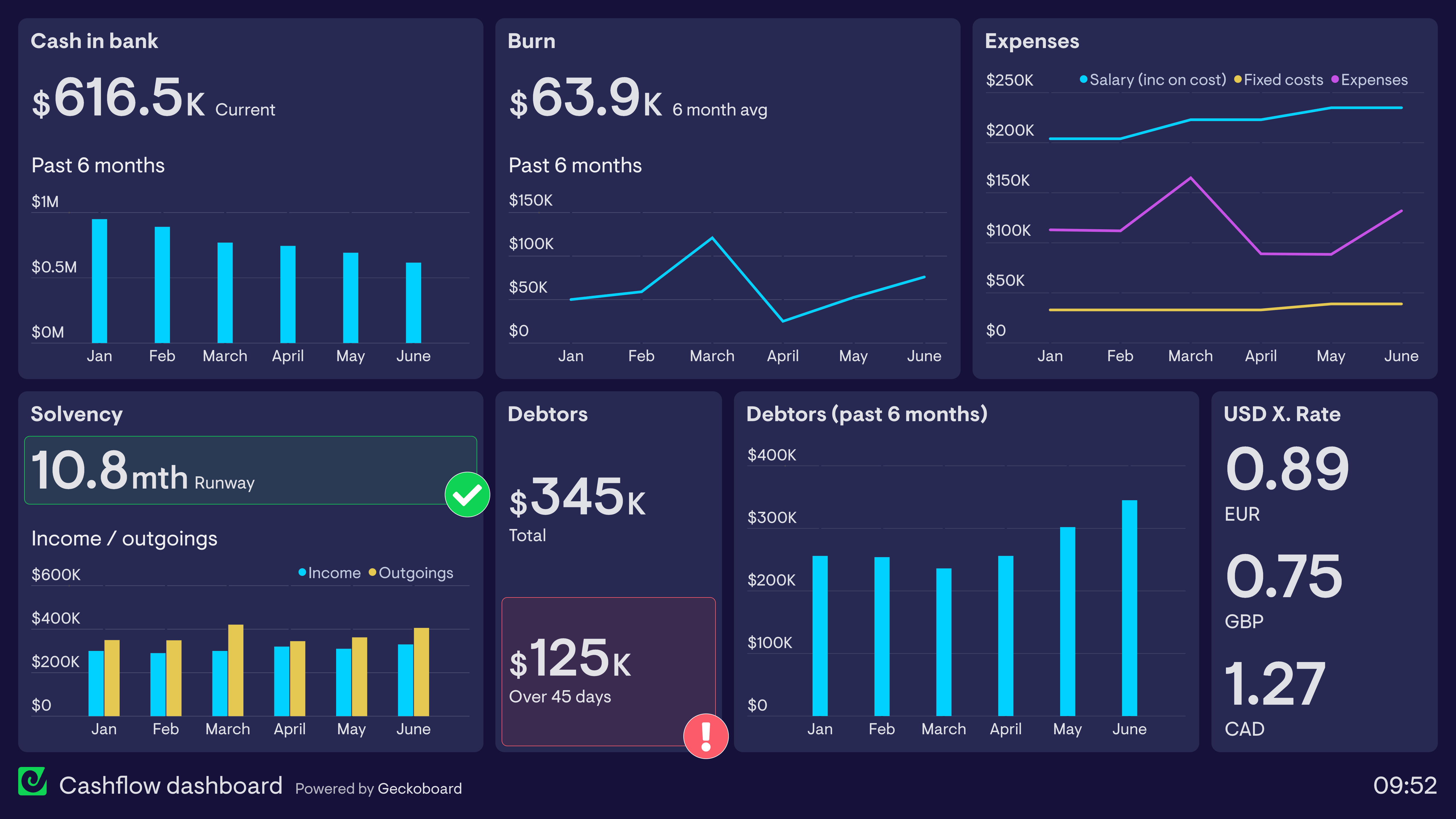What is a CEO dashboard?
A CEO dashboard is designed to provide the Chief Operating Officer (CEO) with a high-level overview of company metrics. However, the focus of these dashboards can vary. For example, some CEOs only want to see metrics related to business performance. Whereas other CEOs use dashboards to keep in touch with areas of the company, which they have been less able to devote time to, as the business has grown.
CEO dashboards often serve a dual purpose. In addition to communicating data from the business to the CEO, they also indirectly communicate the CEO’s priorities to everyone in the business. As the Peter Drucker saying goes – “What gets measured gets managed.”
Example of a CEO dashboard
CEO Overview
When your business starts to grow, and the founder takes on responsibility for building the organization, it can be hard to stay rooted in the customer experience. Although this CEO dashboard isn’t a substitute for true customer insight, it helps to build a customer-centric view of their SaaS business across many different functions and touchpoints
The CEO can easily see how many new customers are signing up to a trial, as well as important high-level metrics on product usage, account changes, and customer service. Furthermore, it provides valuable contextual information which the CEO might otherwise miss – such as the types of customers who are buying, changing or canceling their plans, as well as the general tone and content of customer feedback.
Focus area
Customer-centric view of the business
Who looks at it?
CEO, everyone
How often?
Every day
- MixpanelSQL DatabaseSpreadsheetsZendesk Support
Executive Summary
In a fast moving business, it can be difficult to keep track of how each team is handling their work. That’s why executive summary dashboards take high-level KPIs from each team, and put them together, in one place. This dashboard helps the CEO understand if any one team is struggling with their workload, or has spare capacity. It makes it easier to spot any potential bottlenecks in the customer journey.
For example, this company, which sells and installs electrical appliances, has created a dashboard that takes KPIs from the marketing, sales, installation and customer service team, alongside company finance metrics. Because all of the information is in one place, it’s easier to develop a full picture of what’s going on in the business.
The CEO can easily see if a sudden increase in sales is likely to affect the demands on the installation team. If they are overly stretched, the CEO can step in to avoid a bottleneck. They can also easily see the interdependent relationship between Marketing, who generate Marketing Qualified Leads (MQL) and the Sales team who further qualify those leads (Sales Qualified Leads - SQL) before working to convert them into sales.
Focus area
Team-level KPIs
Who looks at it?
CEO, everyone
How often?
Every day
- SalesforceSQL DatabaseSpreadsheetsZendesk Support
